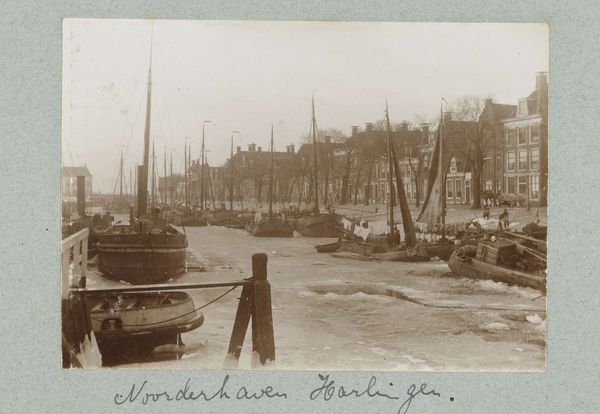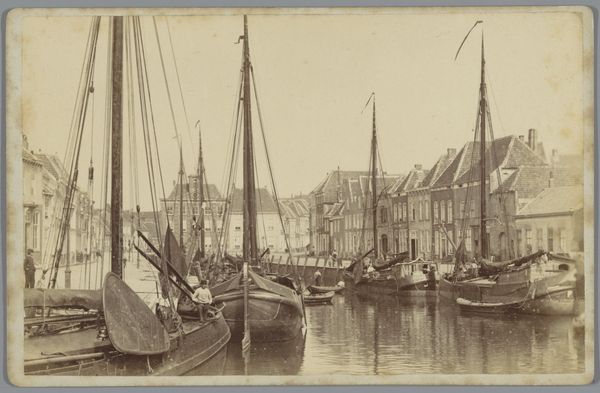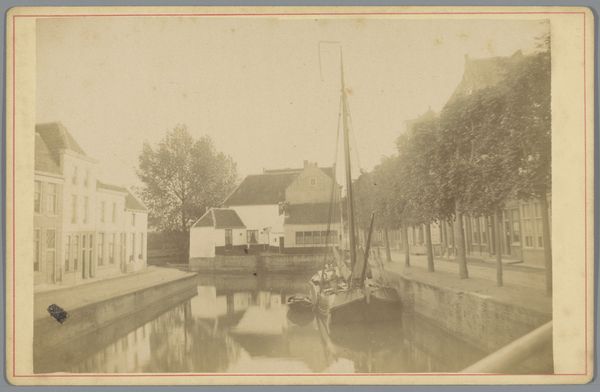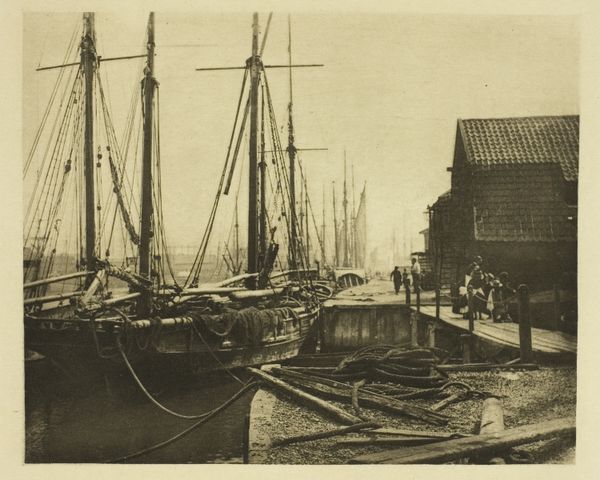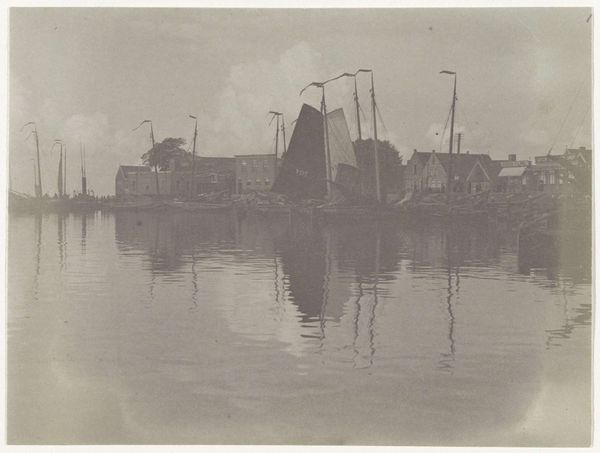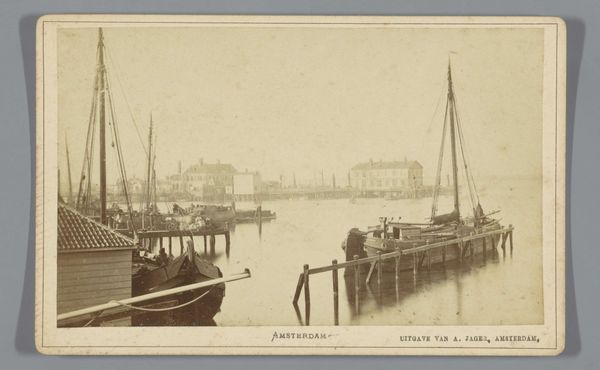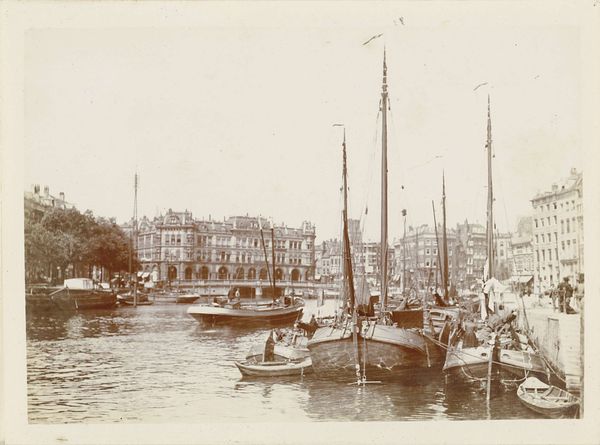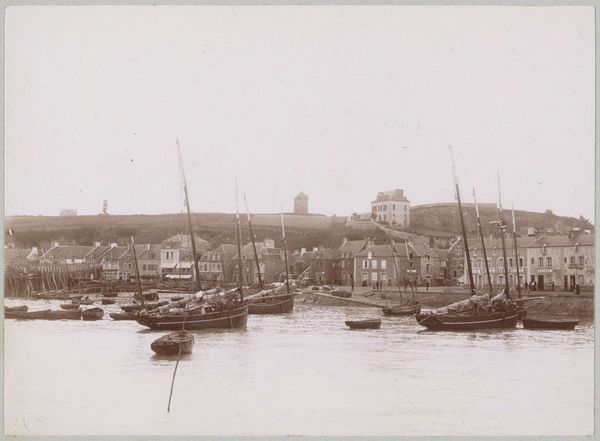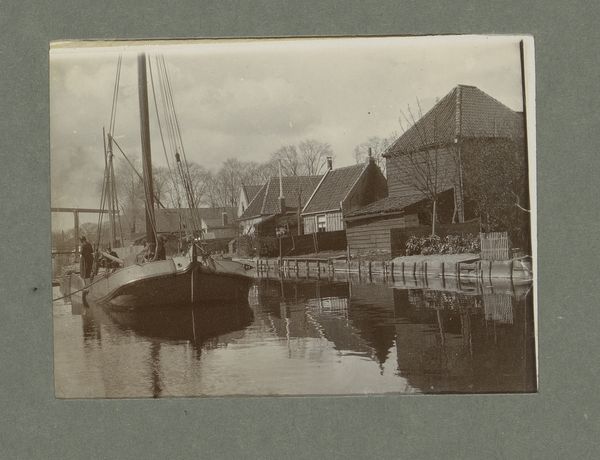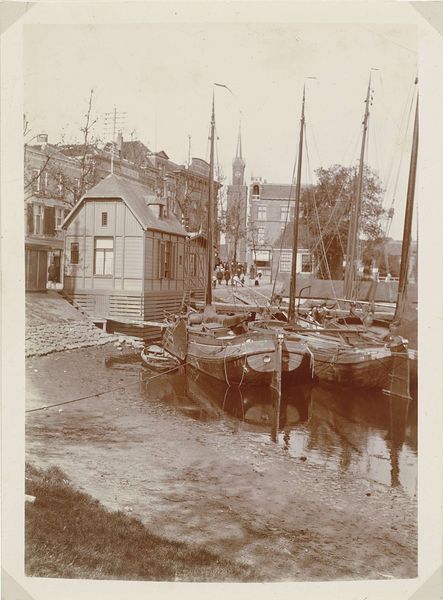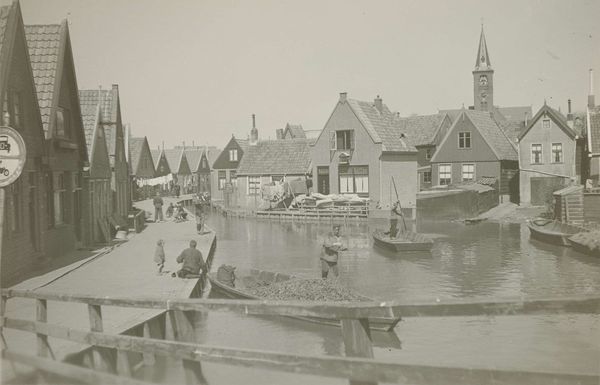
photography
#
dutch-golden-age
#
landscape
#
photography
#
cityscape
#
realism
Dimensions: height 78 mm, width 108 mm, height 242 mm, width 333 mm
Copyright: Rijks Museum: Open Domain
Curator: Welcome to this view of the artwork "Havengezicht met platbodems en molen," a photograph realized circa 1898-1900 by Frits Freerks Fontein Fz. What strikes you first about it? Editor: The monochrome tones immediately cast a subdued atmosphere, almost melancholic. The orderly repetition of the boats juxtaposed against the architectural backdrop suggests a story about labor and community. Curator: I agree that the somber tones emphasize its structural qualities. Look at how the rhythmic alignment of the boats, from left to right, and the vertical lines of the masts and the buildings’ facades work to give this composition a unique depth. The tonal uniformity minimizes distraction. Editor: But I’m wondering, who were these workers, these communities dependent on maritime industry? This photograph doesn't simply offer a visual record; it presents an entry point to discussing class and labour history and perhaps the lives of women who supported these fishermen at home. Curator: Perhaps. From a purely formal standpoint, notice how the placement of the windmill, positioned centrally in the background, offers a focal point that cleverly breaks the static, almost staccato rhythm established by the rows of boats. Editor: And think about windmills, symbolically—their turning blades often powered societal advancements, but for whom did they work and at what cost? Perhaps this seemingly tranquil harbor scene represents a period where technological progression impacted lives unequally, disrupting long-established social dynamics? Curator: Your points open interesting interpretations of this harbour scene beyond just aesthetics and semiotics. I’m drawn back again to the light itself, and its subtle articulation across textures. It almost seems to drain away the noise allowing a sharper appreciation for details within this orderly setting. Editor: In some ways, such a perspective reinforces why studying historical images is important: not merely as art objects, but because of how they document and challenge conventional understandings about society and culture and reveal lived experiences of all. Curator: A beautiful summary, capturing art’s purpose when considering work from bygone eras. Editor: Indeed, artworks offer echoes for interpreting present realities, no matter the era or artistic merit.
Comments
No comments
Be the first to comment and join the conversation on the ultimate creative platform.
